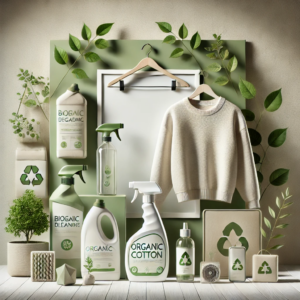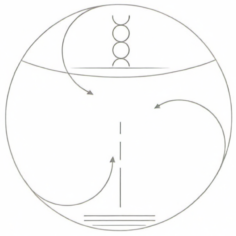Eco-Friendly Goods: Small Changes
Finding eco-friendly products is easy, but ensuring they genuinely align with ethical values requires a thoughtful approach. Some products may be sustainable without a label, while others that appear eco-friendly fall short when considering the full production process. How can you make choices that truly contribute towards a sustainable future?

The Hidden Costs of Non-Sustainable Production
Many brands market themselves as “green,” yet some products remain unsustainable. Green-washing—misleading environmental claims—increases the burden in distinguishing between genuine sustainability and deception.
If eco-conscious production leads to new complexities—greater dependency on external validation, loss of autonomy, or a disconnect from fundamental human needs—can the result still be considered sustainable? If the efforts contaminate the environment by creating heavily complicated situations, polluting by causing increased demand for compensatory knowledge to offset the harm, the net impact may not be as green as it seems.
Why would I care?
You may wonder why it even matters, despite the classically highlighted benefits such as: “It’s better for the environment!” “There is less stress in the goods.” “Caring for others is caring for self.” But what does unsustainable production actually cause of loss? The following explores a few dynamics in play.
- Lost Quality & Lifespan – Mass production prioritizes quantity over durability, leading to a cycle of frequent replacements rather than longevity.
- Eroded Self-Sufficiency – Disposable goods diminish our ability to repair and preserve. Once, durability was the standard; now, convenience fuels waste.
- Diminished Local Stability – Mass-produced imports reduce opportunities for sustainable local craftsmanship, shifting economic power to large-scale industries.
- Increased Resource Dependency – Purchased items may require ongoing maintenance, space and while intertwined with other items shape supply-chain reliance – possessions turns into obligations.
When choosing ecological goods, beyond just opting for less waste—the choice made is for a system that preserves quality, avoids pushing future generations into cycles of higher costs and reduces dependency on short-term fixes. Beyond what is bought, it is about what is lost.
Tips on Verifying Eco-Level
Ensure your purchases align with sustainability values by considering:
- Certifications: Look for reputable labels.
- Sourcing Transparency: Check for supply-chain disclosure while avoiding being blinded by details.
- End-of-Life Considerations: Recyclable, biodegradable, or modular designs.
- Other Buyers: Well-designed products may appeal to those not easily deceived by appearances.
- Ease of Balance: Does the product support seamlessly compensating for the costs to consuming the product?
Instead of searching for new sustainable habits, recognize what you’re already doing. Simple actions—choosing local produce, reusing packaging, minimizing waste—reinforce mindful consumption and create lasting impact.
Beyond the Purchase: Indirect Ecology
Beyond the purchase, eco-logic choices is about the broader impact. Supporting brands that invest in ethical supply chains and regenerative practices may amplify the consideration entailed in every purchase. Conscious consumerism is not just about the item you can feel, connect with and hold – it is about the entire life-cycle, relations, and future opportunities. Considerate actions ripple outward – a moment of decency, may reduce harsh words spoken, mitigating loss of empathy and lead to greater care for other life down-the-line. Beyond individual transactions, a single ethical decision can reduce harm, inspire change, and encourage a shift toward responsible industry standards.
Avoiding Green-washing
To avoid misleading claims, prioritize brands with proven sustainability commitments:
- Research company sustainability reports.
- Look for third-party audits and ethical sourcing verification.
- Be wary of vague claims like “all-natural” without verifiable proof.
Working with AI may reduce decision-fatigue, while remaining aware of the consumption entailed. Due to the high risk of harmful illusions of decency, making choices based on previous efforts may be the only reliable approach. Even if involving a risk of failing wholesomeness, seemingly simple things like transported distance, building on emotional investment in trusted certifiers and considering waste-levels can be the lesser evil – or even better choosing when you shop and the retailers you support (what are the exchange-facilitation costs?).
Immediate Product Swaps
- Cleaning Products: Chemical-heavy cleaners can be replaced by biodegradable alternatives
- Clothing: Ethically sourced fabrics seems super-seeded by 2nd hand clothing – consider circularity
- Tech Accessories: Researching the company briefly, may ease weighing its profile against broad personal knowledge
Small Actions, Big Impact
Small choices build momentum. Swap one item today for a sustainable alternative, and over time, these decisions shape a more eco-conscious lifestyle. Accumulating surplus, may eventually make it possible to go for the greater green choices—choosing less.
Looking for recommendations? Check out local alternative health-stores – there, if you so choose, it is possible to defer to the efforts in pre-selecting goods.
Explore more about sustainability and ethical consumption in this dedicated guide.
